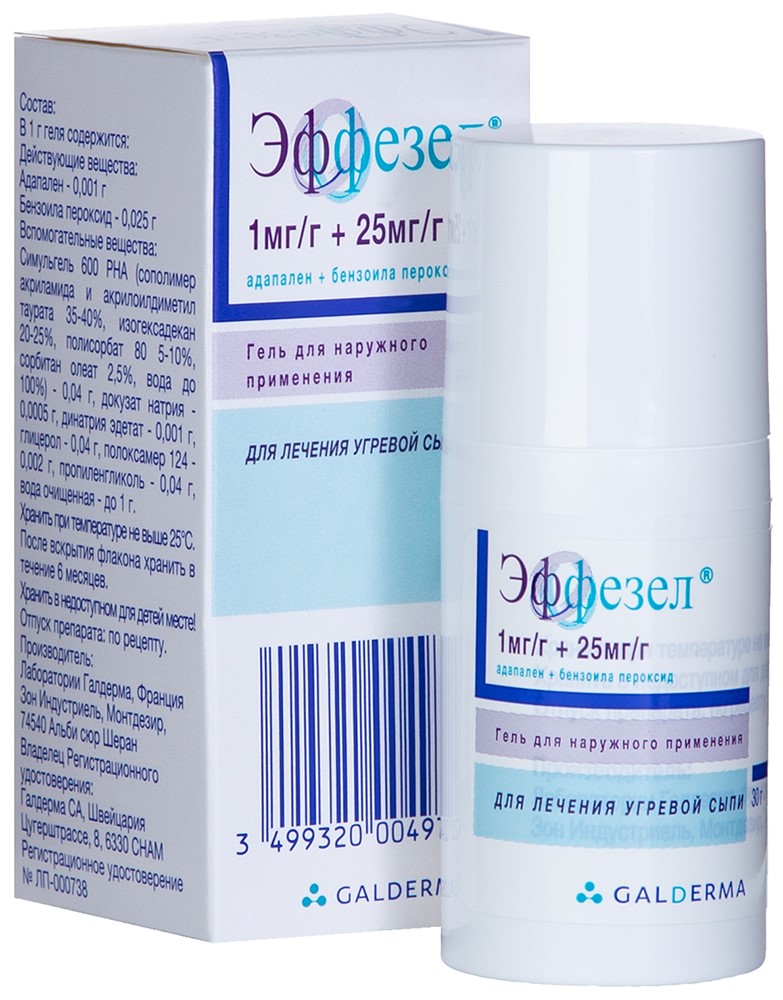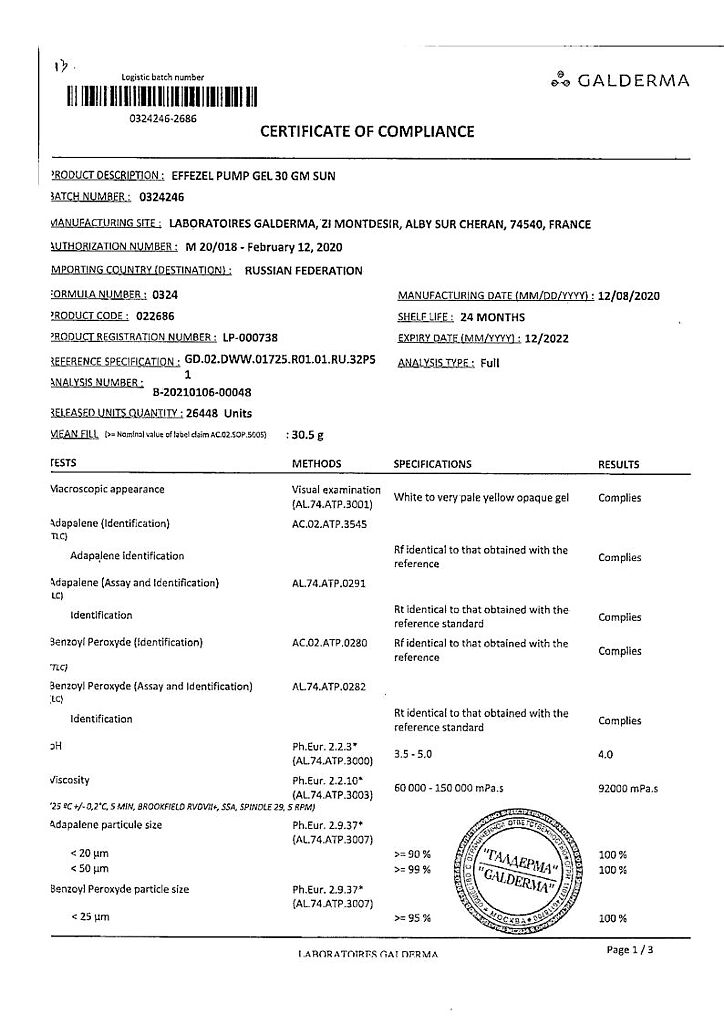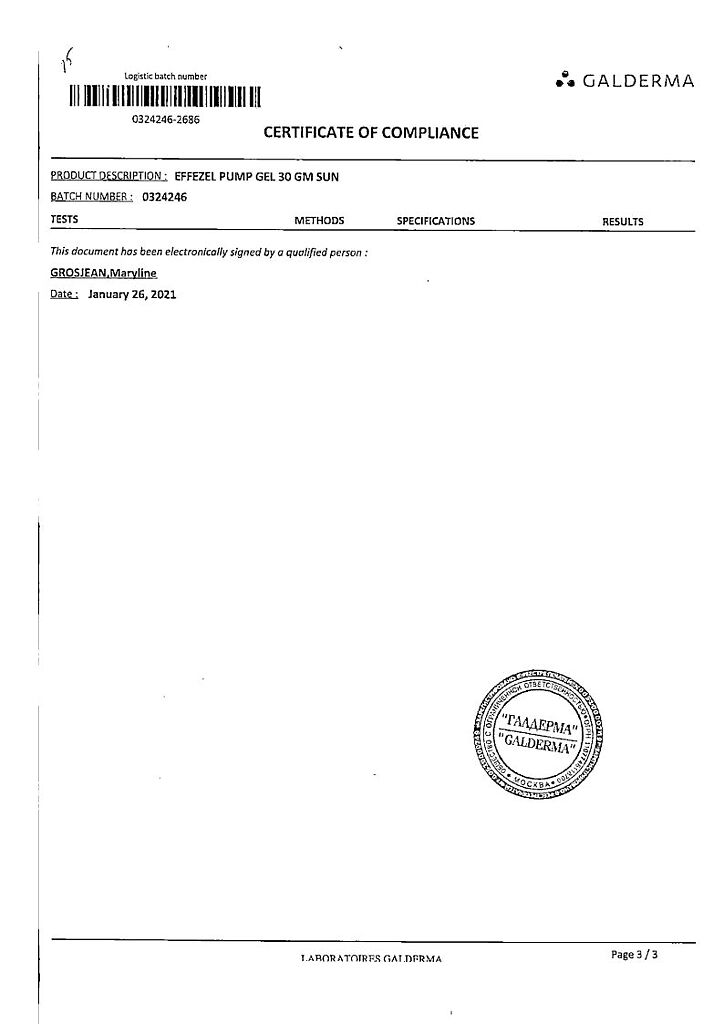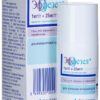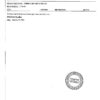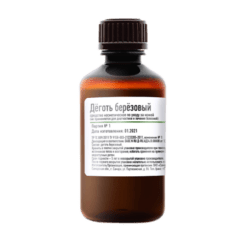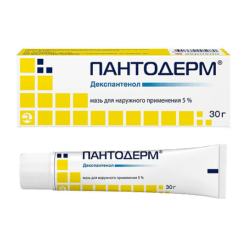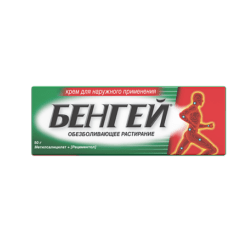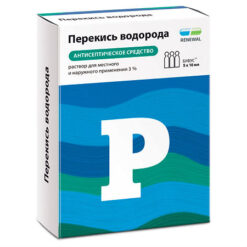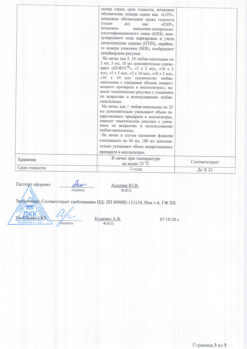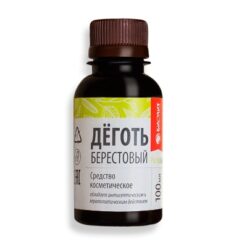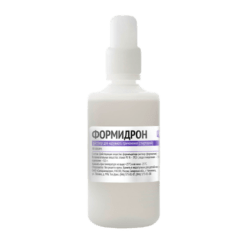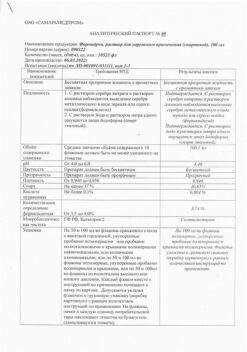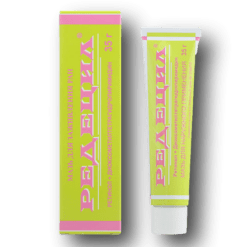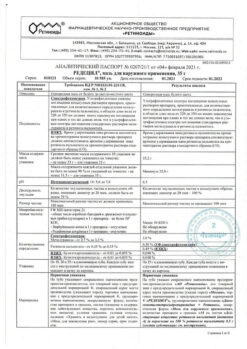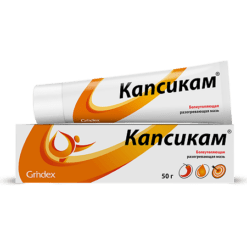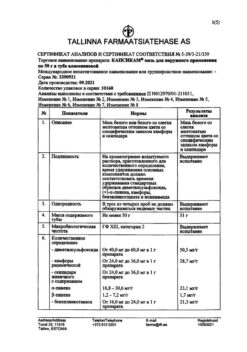No products in the cart.
Effexel, gel 1 mg/g+25 mg/g 30 g
€57.52 €51.69
Description
Pharmgroup:
The drug for the treatment of acne. Retinoid.
Pharmic action:
Effesel gel contains in its composition two active substances with different, but complementary, mechanisms of action.
Adapalen is a chemically stable naphthic acid derivative with retinoid-like action. Adapalene acts pathogenetically in acne vulgaris: it is a strong modulator of cell differentiation and keratinization processes and also has an anti-inflammatory effect.
The mechanism of action of the drug is based on adapalene’s binding to specific retinoic acid nuclear receptors.
The current data suggests that when applied topically, adapalene normalizes differentiation of follicle epithelial cells, thus reducing formation of microcomedones. In vitro adapalene inhibits chemotactic (directional) and chemokinetic (arbitrary) responses of human polymorphonuclear leukocytes and inhibits arachidonic acid metabolism and formation of inflammatory mediators.
According to in vitro studies adapalene inhibits AP-1 factors as well as the expression of toll-like receptor-2. Thus, we can say that adapalene reduces the cell-mediated inflammatory component of acne.
Benzoyl peroxide has antimicrobial effects, particularly against Propionibacterium acnes present in the salivary follicle of acne. It has an exfoliating and keratolytic effect. It has sebostatic action, preventing excessive production of sebum accompanying acne
Pharmacokinetics:
The pharmacokinetic properties of Effesel Gel are similar to the pharmacokinetics of Differin (adapalene) 0.1% gel for external use.
The penetration of benzoyl peroxide through the skin is low. It is completely converted to benzoic acid, which is rapidly eliminated from the body.
Indications
Indications
Effective in the local treatment of acne with comedones, papules and pustules.
Pharmacological effect
Pharmacological effect
Pharmaceutical group:
A drug for the treatment of acne. Retinoid.
Pharmaceutical action:
Effezel gel contains two active substances with different, but complementary, mechanisms of action.
Adapalene is a chemically stable derivative of naphthoic acid with retinoid-like action. Adapalene acts pathogenetically in acne vulgaris: it is a strong modulator of the processes of cell differentiation and keratinization, and also has an anti-inflammatory effect.
The mechanism of action of the drug is based on the binding of adapalene to specific nuclear receptors of retinoic acid.
Current data suggest that when applied topically, adapalene normalizes the process of differentiation of follicular epithelial cells, thus reducing the formation of microcomedones. In vitro, adapalene inhibits the chemotactic (directed) and chemokinetic (voluntary) responses of human polymorphonuclear leukocytes, and also inhibits the metabolism of arachidonic acid and the formation of inflammatory mediators.
According to in vitro studies, adapalene inhibits AP-1 factors, as well as the expression of toll-like receptors-2. Thus, we can say that under the influence of adapalene the cell-mediated inflammatory component of acne is reduced.
Benzoyl peroxide has an antimicrobial effect, in particular against Propionibacterium acnes, present in the pilosebaceous follicle in acne. It has an exfoliating and keratolytic effect. Has a sebostatic effect, preventing excessive sebum production that accompanies acne
Pharmacokinetics:
The pharmacokinetic properties of the drug Effezel gel are similar to the pharmacokinetics of the drug Differin (adapalene) 0.1% gel for external use.
Penetration of benzoyl peroxide through the skin is low. It is completely converted into benzoic acid, which is quickly eliminated from the body.
Special instructions
Special instructions
Effezel gel should not be applied to skin damaged by trauma (cuts or abrasions) or eczematous skin.
Avoid contact with eyes, mouth, nostrils and other mucous membranes. If the drug gets into your eyes, rinse them immediately with warm water. The product contains propylene glycol (E1520), which may cause skin irritation. If hypersensitivity to any of the ingredients of the drug is suspected, the use of Effezel should be discontinued.
Excessive exposure to sunlight or UV radiation should be avoided. Contact with any dyed materials (including hair and dyed fabrics) should be avoided as this may cause discoloration or discoloration.
Active ingredient
Active ingredient
Adapalene, Benzoyl peroxide
Composition
Composition
1 g of gel contains:
Active ingredients:
Adapalene – 0.001 g,
Benzoyl peroxide – 0.025 g.
Excipients:
Simulgel 600 RHA (copolymer of acrylamide and acryloyldimethyl taurate 35-40%;
Isohexadecane 20-25%;
Polysorbate 80 5-10%;
Soroitan oleate 2.5%;
Water up to 100%) – 0.04 g;
Sodium docusate – 0.0005 g;
Disodium edetate – 0.001 g;
Glycerol – 0.04 g;
Poloxamer 124 – 0.002 g;
Propylene glycol – 0.04 g;
Purified water – up to 1 g.
Pregnancy
Pregnancy
The safety and effectiveness of the drug have not been studied in children under 12 years of age.
Pregnancy
There is insufficient data on the topical use of the combination of adapalene and benzoyl peroxide in pregnant women. However, the few available data collected from patients treated with the drug in early pregnancy do not indicate any negative effect.
Animal studies of the combination of adapalene and benzoyl peroxide in which the drug was fed orally to the animals. showed toxic effects on the reproductive system with high systemic exposure.
Due to the limited data available and also due to the possible poor penetration of adapalene through the skin. Effezel should not be used during pregnancy. If pregnancy occurs, treatment should be discontinued.
Lactation
No studies have been conducted on the penetration of the drug into animal or human milk after cutaneous application of Effezel gel. Since systemic exposure to Effesel in nursing women is negligible, no effect on breastfed infants is expected.
Effezel can be used during breastfeeding. Contact of the newborn with the drug and application of the drug to the breast should be avoided when used during breastfeeding.
Contraindications
Contraindications
Hypersensitivity or allergic reactions to the active substances or any of the ingredients of the drug.
Side Effects
Side Effects
The frequency of side effects is distributed in the following order: often (in 1% – 10% of cases); infrequently (in 0.1% – 1% of cases).
For the skin and subcutaneous fat:
Common: dry skin, irritant contact dermatitis, burning and skin irritation.
Uncommon: itching. sunburn.
Frequency unknown (post-marketing data): allergic contact dermatitis.
If skin irritation develops, its intensity is usually mild to moderate, with local symptoms of tolerance (redness, dryness, peeling and burning). which peak during the first week of treatment and then go away spontaneously.
Interaction
Interaction
No interaction studies have been conducted with other drugs. Based on the existing experience with the use of adapalene and oenzoyl peroxide, no interactions with other drugs have been identified.
However, other retinoids or benzoyl peroxide should not be used at the same time. or drugs with a similar mechanism of action. Caution should be exercised when simultaneously using cosmetics with exfoliating, irritating or drying effects due to possible additional irritant effects.
The absorption of adapalene through the skin is low, so the development of interactions with systemic drugs is unlikely.
The penetration of benzoyl peroxide through the skin is low, it is completely metabolized to benzoic acid, which is quickly eliminated from the body. In this regard, the development of interaction between benzoic acid and systemic drugs is unlikely.
Overdose
Overdose
Effezel should only be applied once a day.
In case of accidental ingestion, appropriate symptomatic treatment should be provided.
Storage conditions
Storage conditions
In a place protected from light, at a temperature not exceeding 25 °C
Shelf life
Shelf life
2 years
Manufacturer
Manufacturer
Galderma Laboratories, France
Additional information
| Shelf life | 2 years |
|---|---|
| Conditions of storage | In a light-protected place, at a temperature not exceeding 25 °C |
| Manufacturer | Galderm Laboratories, France |
| Medication form | gel for external use |
| Brand | Galderm Laboratories |
Related products
Buy Effexel, gel 1 mg/g+25 mg/g 30 g with delivery to USA, UK, Europe and over 120 other countries.

